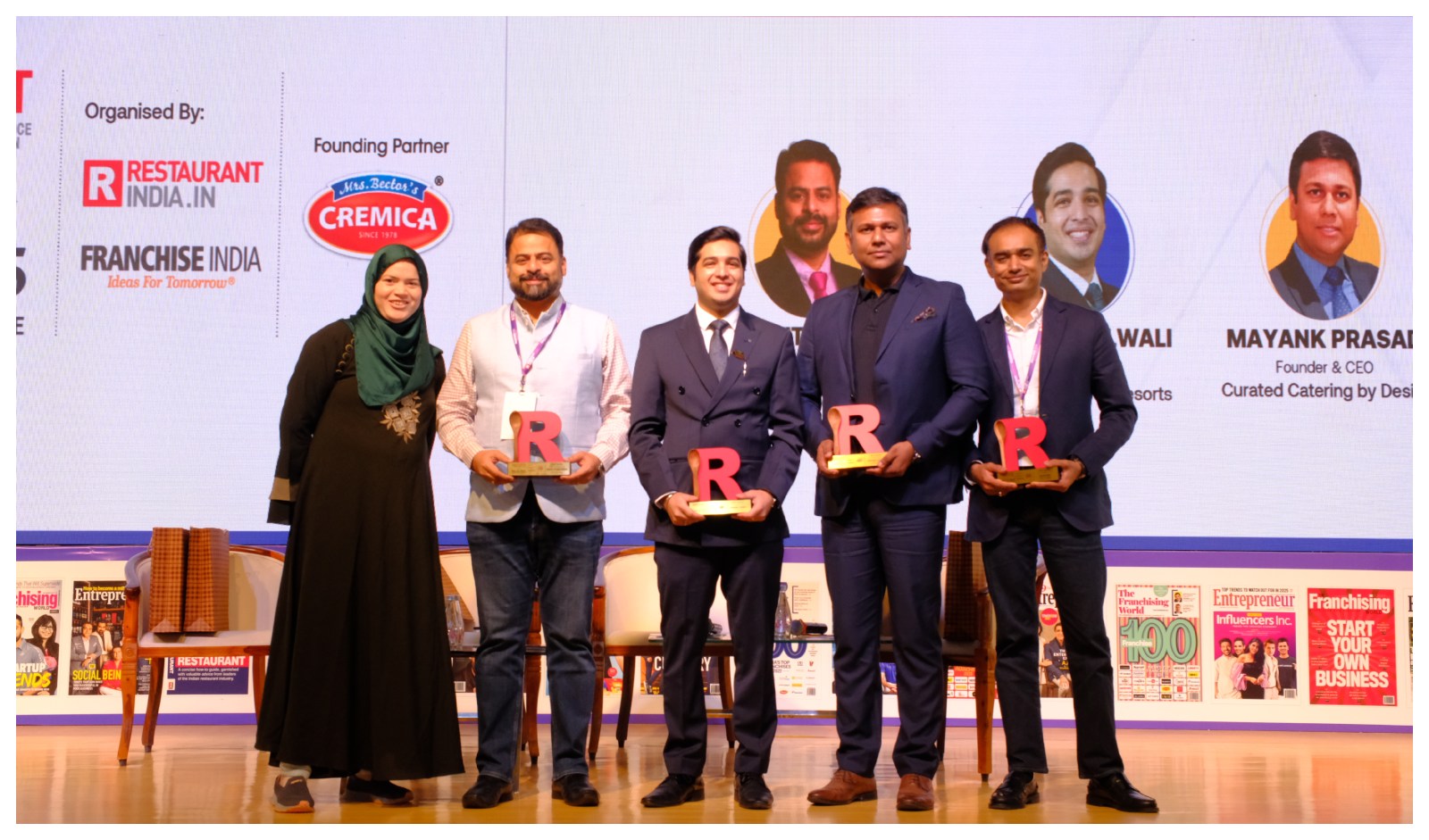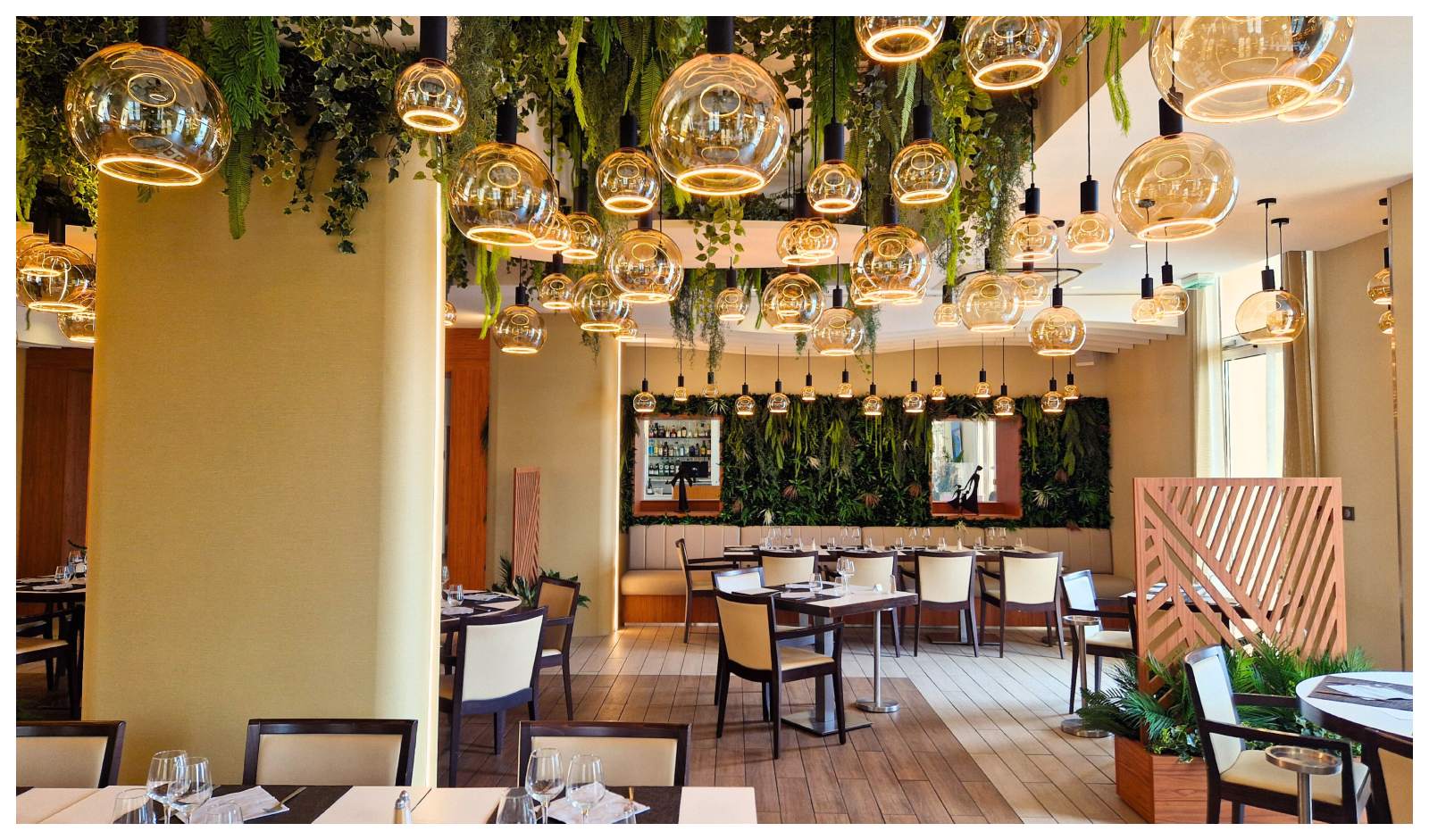
A latest report named Godrej Food Trends 2020 was revealed at the 4th Tasting India Symposium event by its author, food writer and trend-spotter, Rushina Munshaw and C.N. Nageshwaran, Deputy General Manager, Corporate Communications, Godrej Industries Ltd, in the presence of hoteliers, restaurateurs, chefs, farmers, hotel management teachers, journalists and bloggers. Here are the top 10 food trend predictions for 2020
1. Continued commitment to provenance and mindful eating
Powered by the growing demand for sustainable practices, consumers will continue to make active choices that help minimise their carbon footprint by supporting local/artisanal producers and eating seasonally.
2. Deeper exploration of South-East Asian flavours
In 2020, the restaurant industry will offer diners a greater variety of South-East Asian flavours through deeper explorations of the popular cuisines, along with specialist menus from previously unexplored regional and ethnic cuisines from the region.
3. Emergence of the neighbourhood 'foodpreneur'
The growing demand for fresh, hygienic and familiar gharkakhana, combined with the convenience of digital communications and payment platforms, will encourage many more traditional, regional and community cooks to run mini-enterprises from their home kitchens, offering limited daily specials to small communities of their fans.
4. Keeping it real
Fuelled by an ever-growing consumer demand for authenticity, 2020 will see a growth of dining experiences designed around real issues, real people, real ingredients, and real stories.
5. Longing for ghar ka khana
The decline in daily cooking at home, because of changing social dynamics and attitudes towards cooking, will see nostalgic diners ordering food that reminds them of their own ghar ka khana, more often than ever before!
6. No-compromise convenience cooking
A discerning consumer of 2020, experimenting with the latest health fads and lifestyle diets, can look forward to many more options for quickly and conveniently assembling personalised meals at home, with little or no compromises to their choices.
7. Proliferation of desi flavours
As an outcome of the persistent demand for all things indigenous, consumers should expect to see a proliferation of desi flavours in everything from small plates to cocktails and even desserts in 2020.
8. Return to traditional fats
The growing appreciation of the significance of our choice of cooking medium will inspire more consumers in 2020 to go with desi ghee and cold-pressed local seed oils over other options.
9. Rise of the culinary explorer
An evolving sense of social, financial and cultural independence among young people will drive a greater demand for aspirational, novel, and even exotic travel and dining experiences. These experiences will be inspired by exciting new cuisines from within and outside the country.
10. Revival of culinary traditions
Riding the ongoing wave of deeper exploration and discovery of our culinary heritage, food businesses and restaurants will find exciting new ways of packaging traditional food wisdom, knowledge, cookware, cooking techniques and food preparation methods to make it suitable for the demands of the modern dining experience.

Founder & CEO, Butterfly Ayurveda & Cafe Swasthya Dec 09, 2025 / 6 MIN READ
Scaling a niche café concept in a market that’s largely ruled by quick-service restaurants and fusion formats are a careful, often unforgiving process. On the surface it looks attractive: people love specialty coffee, unique menus and experiential spaces. Behind the scenes, however, the economics and operating realities pull in a different direction. QSRs win on consistency, low prices, and predictable unit economics and the convenience consumers increasingly demand; they also attract most of the scale capital and real-estate mindshare in cities.
Fragile unit economics
A niche café’s first and most visible challenge is unit economics as they rely on higher-cost ingredients, skilled baristas or cooks, slower service models and smaller average ticket frequency. That combination pushes operating cost per transaction up while limiting how many customers a single outlet can serve during peak hours. Rent and real-estate choices magnify this issue: premium high-street and mall locations that drive footfall carry steep rents in the cities where scaling matters, so the margin road for a specialty café is narrower from day one. Recent retail leasing data shows continued demand for retail space in major cities, meaning competition for the right storefront remains intense.
Supply chain is a challenge
Supply chain and consistency are another structural barrier. Specialty cafés sell an experience built on a reliably good cup, particular produce, or baked goods. Sourcing single-origin beans, specialty dairy, artisanal baked items or seasonal produce at scale is harder and more volatile than buying commodity inputs. Price swings, vendor variability and logistics can hit quality and margins at once, and standardizing those inputs across multiple outlets is expensive and time-consuming. Research and industry commentary repeatedly flag supply-chain unpredictability as a central pain point for independent cafés trying to grow.
Limited but passionate loyalty
A niche café often wins with a smaller, loyal audience who values origin stories, craft, and ambience. That audience is growing, and specialty coffee is expanding, but it still forms a minority of total market demand. To scale beyond early adopters, a café must either broaden its appeal or accept slower growth and a denser network of neighborhood flagship stores, both of which carry trade-offs. Broadening the product mix to chase mass customer’s risks diluting the brand and eroding the very differentiation that attracted the core audience in the first place. Industry analysis suggests specialty coffee will grow meaningfully in India, yet it will take time to become a dominant share of the overall market.
More than just the Cafe
Capital and investor expectations influence the playbook. Investors who back rapid rollouts expect uniform unit economics and fast payback - a fit for QSR playbooks but difficult for niche cafés unless those cafés find new revenue streams such as retail product lines, subscription models, small-batch retail or events. Larger chains that entered India with aggressive expansion plans have already had to recalibrate when global brands scale, they can absorb early losses with diversified portfolios and deep supply chains, but smaller specialty players usually cannot.
To conclude, scaling a niche café in a QSR-dominated market is possible. The brands that succeed will be those that balance the craft that makes them special with pragmatic decisions about price, supply, training and where - and how - they put their next store. With careful planning, a clear model for maintaining quality at scale, and realistic financial targets, a niche café can grow while keeping the very things that made customers fall for it in the first place.

Growing at a CAGR of 9.4% between 2024 and 2030, the hotel industry is growing steadily, both globally and in India driven by a mix of economic recovery, changing travel habits, and new business models. What emerged was a clear message that hospitality is not merely recovering; it is being rewritten.
Innovation is Not Optional, It’s Survival
Harshal Dilwali, Director & CEO, Clarissa Hotels & Resorts spoke about reinvention. With properties across Goa and Uttarakhand, he witnessed firsthand how domestic travel surged as international inflows stopped.
“We didn’t see any charter planes coming in.” Dilwali recalled. “But we saw a boom in domestic tourism. People began exploring states they had never visited before. Parallel to this came a technological leap. Clarissa Hotels became one of the first in its category to introduce web check-ins during the pandemic allowing guests to upload documents, select rooms, choose meal plans, and even handle billing online.”
This is common now, but at that time it was a big boost. Technology played a crucial role and will play even bigger rule in the future. As guest expectations rise every six months like new menus, room design upgrades, personalized experiences, Dilwali believed innovation is not optional. It is survival.
For Vishal Vithal Kamat, ED, Kamat Group of Hotels whose family has run hotels for nearly eight decades, the pandemic wasn’t a pause. It was a catalyst.“There is no post-Corona. Evolution happened while Corona was still on.”
Kamat explained how lockdowns created unexpected entrepreneurs like home bakers, home chefs, and small-format operators who eventually expanded into standalone restaurants or experiential dining spaces across tier-II and tier-III markets.
He noted a significant cultural shift. Diners became more adventurous. Audiences began seeking out non-brand experiences. Hospitality opened its doors to passionate creators who were not from traditional “pedigree” backgrounds.
The result is a diversified landscape one where homestays, boutique restaurants, and niche F&B concepts are no longer alternate formats but legitimate competitors in the new hospitality ecosystem.
When Authenticity Becomes Non-Negotiable
For the catering industry, the pandemic wasn’t just a challenge it was reawakening.
Mayank Prasad, Founder & CEO, Curated Catering by Design who leads a high-end catering and wine-events brand pointed out that customer expectations today have reached unprecedented levels. “Customer delight is no longer the end point,” he said.
“Expectations increase day by day. You either meet them or surpass them. Innovation happens in every sector, changes are happening in formats in terms of hotel operator and catering, and they are evolving in new ways of how to retain a client.”
He described how luxury clients now demand hyper-customization right down to niche cuisines such as Bihari live stations, regional specialties, or authentic international dishes.
“Clients are well-travelled,” he explained. “They know what they are asking for, and they know exactly how it should taste.”This shift pushes caterers to maintain authenticity, broaden their culinary networks, and ensure their teams can deliver diverse experiences with precision.
The Standalone Advantage
One of the most heated topics was the changing power dynamics between hotels and standalone restaurants. “Standalone restaurants benefit from 5% GST, making them seems more affordable than luxury hotel venues taxed at 18%.Malls today are effectively five-star ecosystems without roomsoffering spas, entertainment, shopping, and trendy dining under one roof,” shared Kamat by adding that hotels have had it tough. Many have shifted to functional formats rather than experiential ones.
However, loyalty programs whether Orchid Rewards or Taj Inner Circle remains powerful tools to keep existing customers engaged. Many of the hotels have in-house programs to cater to. They have corporate clientele as well. And despite the challenges, opportunities remain for hotels willing to collaborate with external operators.
“One of the important things is loyalty recognition. Restaurateurs are already doing this apart from hotels which we know. In Orchid Hotel, we have 10 lakh members and hence we are collaborating with other hotel and brands to give our guest more through the loyalty programs. They can stay in other hotels through orchid rewards,” pointed Kamat.
The Future of Collaboration
Kamat highlighted a major shift underway. “Hotels are increasingly open to bringing in standalone restaurant brands particularly in new developments where back-end infrastructure can be designed for diverse F&B operators. In older hotels, challenges like shared kitchens and space limitations complicate outsourcing, but not impossible.”
He added, “There’s a hotel in Mumbai that has outsourced even room service with a fixed menu and revenue-share model.” The key lies in early-stage planning and designing a hotel that supports multiple culinary formats. The newer places are thinking on this line, while the older places are focused on what they do.
Caterers Inside Hotels: A Modern Win-Win Model
For Prasad, partnerships between hotels and caterers are not just workable, they are increasingly essential. His company manages several hotel banquets as a white label catering partner, where they operate under the hotel’s brand. “Goodwill plays an important role in hospitality. We are associated with many brand owners, hotels and some of the places where we work as white label as an associated catering partner.”
There is a lot of flexibility which a caterer gives to the property owner. The benefits to hotels include Zero staffing and salary burden, Access to specialized culinary expertise, Flexibility across cuisines and Ability to meet fast-evolving guest expectations.
Dilwali shared, “People are not entering the hotel by looking at fancy tiles or flooring, giving a personalized service is majorly important than anything. Hotels are not only facing competitions from one another but they are facing competitions from airbnb. We want to make them feel valued by creating good memories and give nostalgia which make them comeback.”
And, we can say that what began as a crisis has evolved into one of the most transformative periods in India’s hospitality history. Whether through technology, partnerships, design innovation, or new F&B models, businesses are rewriting their future. One thing that we can say is adapt, evolve and deliver experiences that will help today’s guest to return for tomorrow.

As sustainability moves from an aspirational idea to an operational necessity, India’s hospitality sector is stepping into a new era, shaped by climate urgency, regulatory shifts and a generation of consumers demanding transparency.
“Sustainability is not a wish anymore. It has become an important and integral part of everybody’s life as it’s about survival,” shared Dr. Nitin Shankar Nagrale, Founder & General Secretary – Hospitality Purchasing Managers’ Forum (HPMF).
The Sustainability Imperative
Nagrale spoke about the fundamental change in mindset post–COVID, where sustainability and supply-chain vigilance are no longer optional.
Guest expectations have evolved rapidly where they ask about origin, traceability, compliance, and the ecological footprint of every plate.
“Guests have started looking for traceability even individuals running organizations are particular about what they bring to the table,” he added by pointing that the next five years will see drastic changes, pushing businesses to upgrade processes and documentation.
Increasingly stringent norms under FSSAI, FDA and upcoming regulatory frameworks will shape how the industry procures, manages logistics, stores ingredients, and documents compliance.
A Green Building Movement Meets Hospitality
“Why are we talking about sustainability? Because there is a climate challenge. Global warming, pollution and scarcity of resources every industry must understand this,” mentioned Dr. Mala Singh, Chairperson- IGBC (CII) Mumbai Chapter and Founder & Director, PEC Greening India by emphasizing that hotels and restaurants have a disproportionately large ecological footprint.
Waste: The Sector’s Biggest Blind Spot
Dr Singh pointed, “28% of global waste comes from the hospitality sector. Every year, we add 185 million tons of carbon emissions. Restaurants, cafes and catering units alone contribute 8–10% of global GHG emissions not counting large hotels, construction, and infrastructure.”
The message was clear: the industry’s climate impact is significant, and mitigation must begin at every node farming, sourcing, storage, transportation, processing, and service.
Not only this, Gen Z and Gen Alpha are accelerating the shift and are demanding eco facilities. “Earlier, ‘eco hotel’ was just a tag. Today, hotels have ESG policies requiring green certifications,” she shared.
For hotels, sustainability now means energy and water conservation, responsible procurement, waste reduction, and adopting green certifications from inception and retrofitting existing properties.
The Farm-to-Fork Push
Gurtej Singh Matharu, Head - Central India, Zuper Hotels & Resorts described the challenges of integrating local farmers into hotel supply chains especially in emerging hospitality regions like Bhopal.
“The first hurdle is consistency. Farmers work with nature, but hotels work with fixed menus and guest expectations.” Other major challenges include Quality management like sorting, grading, storage; Logistics includes timely delivery from remote farms, Documentation of batch reports and FSSAI norms, Price fluctuations in which small-scale farmers cannot guarantee stable pricing.
Despite these hurdles, Matharu shared initiatives Zuper Hotels has already introduced: “A good practice should begin from home. We source 90% of grains, cereals and vegetables for our staff cafeteria from the local haat bazaar.”
In guest-facing areas, the hotel is gradually introducing farm experiences like plucking sessions, make-your-own-salad activities, and conscious-eating formats during high tea.
“Today, luxury comes with responsibility. Travellers who are more aware expect us to support local ecosystems and communities,” he added.
Building India’s Largest Contract Food Service
Sanjay Kumar, CEO & MD, Rassense Pvt Ltd who owns India’s largest Indian-owned contract food service company highlighted the staggering cost implications of sustainable sourcing.
“Out of our 500-crore revenue, 67% is cost of goods sold. And that includes agricultural commodities, perishables, fruits, vegetables,” he mentioned. As there is growing importance of farm-to-fork practices with guest preferences shifting toward transparency and conscious eating.
On policy-level interventions, Kumar cautioned against excessive regulation. “Over-regulation leads to underperformance that even the FSSAI largely functions through guidance rather than statutory enforcement. He called for a structural, participatory approach between the consumption sector and regulators to strengthen responsible sourcing.
Dr. Singh emphasized the role of a green supply chain, especially for certifications. “Without it, no green certification in India is possible,” she said. While IGBC offers standards for buildings and interiors, she stressed the need for a dedicated framework for restaurants and catering, given their large-scale operations. Industry associations like HPMF, she added, could help shape these guidelines.
As India aims to become a developed nation by 2047 and the hospitality industry has a crucial role to play in achieving sustainability, food security, and climate goals. Sustainability is not merely an operational choice but a national responsibility.

In today’s dining scenario, a restaurant’s identity no longer lives within four walls. It exists just as powerfully in Google search results, Instagram feeds and food delivery apps search engine. For diners, the line between physical and digital has blurred, a great dish is expected to taste as good as it looks online. For restaurateurs, the challenge is to create a seamless bridge between the experience on-screen and the one on the plate.
The Rise of the Hybrid Restaurant Identity
Most diners visit restaurants based on photos, reels, reviews and menus posted on social media. But once they arrive, they still expect warmth and a real connection. Balancing both worlds means blending good storytelling, smooth operations and smart use of technology.
Addressing this, Vishal Wadhwa, Director of Shilton Hospitality said, “Shilton Hospitality builds a seamless bridge between online visibility and offline experiences across its brands Watson’s, Fireflies, Starlight, Shilton Hotels and 22 Catering Company.”
Commenting on the same, Fino Frangline, Co-Founder, Mykos Craft Kitchen & Bar shared, “Currently at Mykos, we focus on a wholesome strategy online which is our brand social media page, meta-ads, influencer marketing, online PR via news articles etc which in turn helps our SEO exercise which is key for us and finally google ads too. We also focus on online aggregators marketing (Zomato/Swiggy) to acquire new customers.”
Storytelling Beyond the Menu
Social media has become the new word-of-mouth. Great restaurants use it to tell stories showing what happens in the kitchen, highlighting their team, or sharing where ingredients come from. Short videos, chef reels, or behind-the-scenes posts help guests connect emotionally. Around 80-90% of the restaurants focuses on social media marketing.
Adding to this, Priyanka Bonick, Managing Partner, Kizakaya and Kampot (K brands Hospitality Pvt Ltd) said, “Our main focus is food quality which is consistent for both platforms. Offline focus is maintained through ambiance, Google reviews and traditional marketing methods. Key factors for online presence for Gourmet restaurants have higher area of coverage, keep feedback / review high on the delivery apps, sturdy and attractive packaging.”
Frangline noted that they focus on wholesome strategy online which is through their brand social media page, meta-ads, influencer marketing, online PR via news articles etc which in turn helps the SEO exercise which is key for the brand and finally Google ads too.
The Offline Presence
Offline presence of restaurants and cafes is a backbone to the business. Brands have to focus on marketing in offsite locations and around 40-50% of the brands do so to reach the new customers.
“We focus a lot on offline collaterals in societies in our neighborhood and support college fests as sponsors within 6-8 kms radius to increase brand awareness etc,” mentioned Frangline.
Reclaiming Customer Relationships
Food delivery apps like Swiggy, Zomato, Zepto and Uber Eats expand a restaurant’s reach but come with trade-offs high commissions and limited access to customer data make it harder to build direct connections. Managing online reviews has also evolved beyond damage control and restaurants now see feedback as a two-way dialogue, thanking satisfied guests and addressing concerns in real time.
Elaborating on this, Wadhwa said, “We believe every digital impression should lead to a memorable in-person experience. By aligning online storytelling with real-world touchpoints, we continue to build brands that connect with people, celebrate communities, and deliver hospitality that lives both on-screen and off it.”
Experience Beyond Screens
The in-person experience should reflect what’s promised online. Consistent menus, plating, uniforms and packaging help guests link the digital and physical platform. A unified identity across both builds recognition and trust.
“We integrate both worlds through cross-promotions, QR-based engagement, loyalty programs, and data-driven insights that enhance guest journeys from discovery to experience,” pointed Wadhwa.
To this, Bonick added, “In the recent past, Google has changed a lot, and the digital team is optimizing the google search results. Offline sales mainly are targeted through google ads, online through Swiggy / Zomato Ads. Both works differently. Meta Ads seems to be the way forward; we are still evaluating the same.”
Navigating Challenges
The dual presence brings its own set of challenges. Relying too heavily on third-party delivery apps can have issues in margins and brand control. Discrepancies between online menus and in-house pricing confuse customers.
While the future lies in personalized and tech-enabled dining ecosystems. Also, AI-driven CRM tools predict preferences, loyalty programs work across dine-in and delivery and AR menus are making experiences interactive.

During peak seasons, AI plays a vital role in streamlining operations and enhancing safety. AI in food safety with predictive analysis helps reduce contamination risks, protecting both consumer health and the brand’s reputation. It also improves efficiency by accurately forecasting demand, which prevents over-ordering and cuts down on food waste benefiting both the business and the environment. Let’s see how AI helps the brands to enhance themselves.
The Peak Season Pressure: Why Food Safety Risks Multiply
Peak seasons always test the limits of brand’s operations from sourcing and storage to kitchen efficiency.
Commenting on this, Hardik Shah, Chief Technology Officer, Impresario Entertainment & Hospitality Pvt. Ltd said, “We use tools that are helping us plan better rather than just react. Even simple pattern recognition like understanding consumption trends or monitoring temperature consistency goes a long way in maintaining food safety.”
The brand is also using data to get more visibility into what’s happening in real time and where potential risks could arise. “It’s less about replacing human judgment and more about giving our teams the right insights at the right time,” he added.
It also helps in improved consumer safety, lower operational costs, quicker decision-making, and stronger compliance.
Significant Impact from AI
AI tools have automated menu digitization and onboarding, enabling restaurants to go live faster, facilitate real-time order matching with delivery partners, and recognize demand patterns for strategic pricing and promotional purposes.
Referring to this, Anirudha Kotgire, Managing Director & Co-Founder of Waayu mentioned, “We utilize AI for faster onboarding, more efficient order matching, and insights that enhance restaurant margins. Waayu enhances restaurant profitability with lower operational overhead, reduced food waste, quicker revenue capture, and higher average order value, all while safeguarding restaurants’ control over pricing and customer data on Waayu’s zero-commission ONDC-native platform.”
Monitoring Real-Time Data
AI supports regulatory compliance by providing real-time, data-backed proof of safety measures and continuously monitoring critical control points. This gives brands and food outlets the confidence to handle peak production periods while maintaining quality, consistency, and cost-effectiveness.
Sharing further, Kotgire noted, “Waayu empowers restaurants to observe order status, kitchen load, and order execution in real time via POS, new POS functionality, and delivery telemetry.”
The quality of service is not affected because the immediate visibility and alerts reduce order delays and cancellations; as a result, customer satisfaction will remain high. Automated quality checks and smart resource allocation help businesses respond faster and more efficiently.
Focus on sustainable operations
AI also supports sustainability by minimizing waste, reducing energy use, promoting traceability, and encouraging circular economy practices and eco-friendly packaging. It’s not just about efficiency; it’s about building responsible, future-ready operations.
Chef Vijay S Sahu, Chef de Cuisine, Courtyard by Marriott Mumbai International Airport added, “AI can help detect potential issues early, provide end-to-end supply chain transparency, and improve traceability. With real-time monitoring, businesses can forecast demand and spoilage more accurately, order ingredients in the right quantities, adjust production schedules, and quickly identify any batches at risk.”
By analyzing supplier histories, delivery patterns, and ingredient shelf life, AI systems can flag batches that have a higher risk of contamination. For example, if a supplier has had previous cold chain issues or delayed deliveries, the AI can recommend closer inspection or alternate sourcing.
The Foreseen Challenges
A key challenge is the heavy reliance on large amounts of data. If the data is limited or inconsistent, AI models may be inaccurate. There’s also a lack of standardization on how data is collected, along with high costs and complex systems, which can make it difficult for smaller food businesses to adopt.
The challenge, of course, is balancing technology with the human element that hospitality thrives on. Shah mentions, “For us, it’s about using tech quietly in the background so that operations feel smoother, safer, and more consistent.”
Commenting on this, Agilesh R, Director F&B, Sheraton Grand Chennai Resort & Spa shared, “While challenges like data integration, high setup costs, and staff resistance exist, they can be overcome through clean data practices, employee training, pilot projects, scalable cloud platforms, and robust cybersecurity.”
The big opportunity lies in shifting from a reactive to a proactive approach. This helps reduce overproduction and food waste, lowering environmental impact while supporting the company’s sustainability goals all with the assurance of strong food safety standards.

The restaurant business has always run on thin margins, and the challenges have deepened in recent years. With ingredient prices climbing, staff wages increasing, rentals soaring, and demand patterns fluctuating, operators are being pushed to reimagine their financial strategies.
Even as cost management becomes critical, quality and quantity remain the heart of hospitality. The most successful restaurants today are proving that profitability doesn’t have to come at the expense of excellence it’s achievable through sharper operations, thoughtful menu design, and agile use of technology. Here are the few tips and techniques to overcome the same.
Importance of Smart Sourcing
The journey toward sustainable profitability begins with smarter procurement. Since ingredients make up nearly 30–40% of a restaurant’s total expenses, even minor inefficiencies can quickly eat into margins. Regular stock audits, strict adherence to FIFO (First In, First Out), and close monitoring of yield percentages can help save thousands each month.
However, Avik Chatterjee, Executive Director – Innovation and New Format, Speciality Restaurants Pvt Ltd highlighted that sourcing seasonal and local produce helps lower costs while enhancing freshness and flavor.
Maintaining Quality & Quantity
To cut costs while maintaining both quality and quantity, restaurants focus on streamlining the menu to highlight popular, versatile dishes that use overlapping ingredients, reducing waste and simplifying inventory.
Vikrant Batra, Founder, Cafe Delhi Heights said, “We have maintained both without compromising, regardless of cost pressures. Each of our outlets follows set recipes for every dish, and we have a strong monitoring system in place to ensure consistency. This helps us stay close to our ideal food cost while delivering the same quality and portion every time.”
Challenges in Dropping Margins
Even top restaurants are under pressure as rising costs collide with guest price sensitivity. The key factors squeezing profitability include fluctuating demand, shifting consumption habits, high expectations, pricing constraints, talent retention, steep rentals, and technology expenses.
Adding to this, Chatterjee said, “At Episode One, we are taking on the challenge of dropping margins head-on by emphasizing efficiency, sustainability, and guest value. We have simplified our menu to cut down on waste and highlight seasonal, fresh foods, streamlined operations to keep expenses under control, and added new revenue streams like carefully planned events and takeout options.”
He added that the economic landscape is challenging, we remain committed to delivering a memorable dining experience without compromising on quality or hospitality.
If restaurants are in prime locations, then it comes with huge rentals which can consume around 20-25% of the total revenue.
Elaborating his views, Krishna Tamang, Founder, China Gate Group added, “At Red Box Cafe, we understand that the restaurant industry is undergoing significant changes. From rising ingredient costs to labor shortages and inflation, maintaining strong profit margins is more challenging than ever. However, our commitment to delivering high-quality, satisfying meals to our guests remains unchanged.”
Control Labor Costs
Restaurants save labor expenses by decreasing overtime through better shift planning, cross-training personnel for numerous positions, and optimizing staff scheduling depending on peak hours.
Furthermore, Tamang added, “Red Box Cafe is able to control labor expenditures by adopting labor management systems to avoid overstaffing, cross-training staff to perform numerous duties, and optimizing personnel schedules based on demand estimates.”
Labor costs which previously made up 18–22% of total expenses, now frequently surpass 25–30%, forcing operators to choose between raising menu prices or risking slower service and reduced quality both at undesirable outcomes.
“We source affordable, in-season ingredients, minimize waste through portion management, and streamline inventories to lower food expenses,” shared Chatterjee.
Menu Engineering
Menu engineering plays a crucial role in optimizing profitability. It helps by focusing on high-margin, low-waste dishes that are easier to prepare.
Batra stated that analyzing item performance and profitability, we can smartly position and price menu items to influence choices and improve margins.
Hiring Right Talent
It’s always people and processes that drive efficiency. Having the right talent in the right place is key. Addressing this, Batra said, “We focus on quality over quantity when it comes to hiring. Skilled employees contribute far more to operational efficiency. For food cost control, our ideal costs are defined based on recipe costing and selling price, and we’ve built systems around ensuring those are maintained.”
Power of Technology
Technology adds an edge like inventory systems, POS integrations, and real-time reporting tools help us monitor performance, reduce wastage, and streamline operations.
While, Chatterjee noted, “While technology like POS systems, inventory tracking, and kitchen display systems as it improves accuracy, reduces errors, and enhances operational efficiency, ultimately supporting better cost control without sacrificing quality.”
Batra mentioned that when technology is used right, menu engineering and tech together form a powerful strategy for cost control without compromising what we stand for.
With this, restaurants must operate with financial discipline equal to their culinary creativity. Thriving in today’s low-margin environment means doing more than just surviving, it’s about creating restaurants that are efficient, adaptable and built to last.

If a restaurant or bar opens its doors and no one is there to eat or drink, does it make a profit? Of course not. Customers are the lifeblood of the hospitality industry. However, even the busiest and most popular locations all experience the ebb and flow of business. There are certain times of year during which the stream of people can slow to a trickle, or perhaps even stop altogether. In markets that depend on seasonal visitors, such as skiing communities and along the coasts, the offseason can be a very lonely time for food trucks, family restaurants and others.
Just because your business may have to survive a quiet period doesn’t mean it should suffer. There are plenty of strategies you can employ to boost traffic to your location or become leaner. For example, you could create cross-promotional opportunities with other local entrepreneurs to attract new customers. You might streamline your operations when you expect activity to be at a low point and save money.
The accompanying guide contains numerous pointers you can use to help you become better prepared for winter or whatever form the slow months take. These periods of inactivity may be inevitable, but they don’t have to mean the end of your dreams.





Copyright © 2009 - 2025 Restaurant India.
















